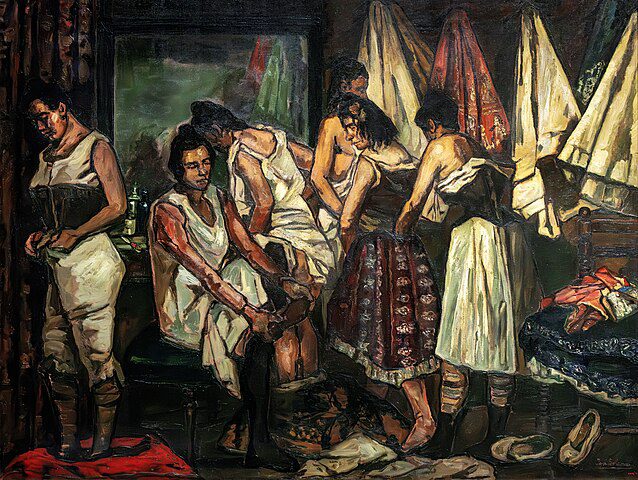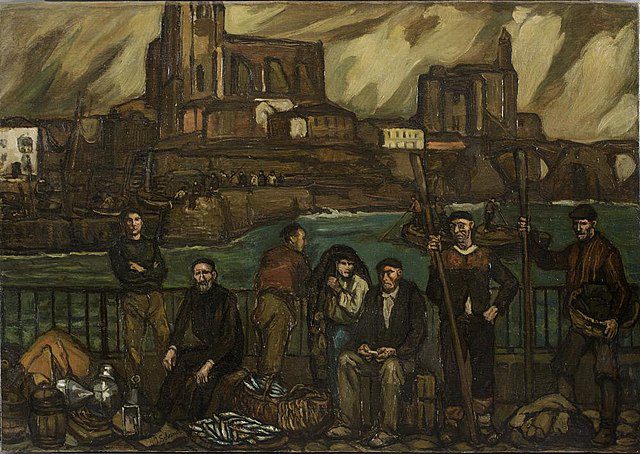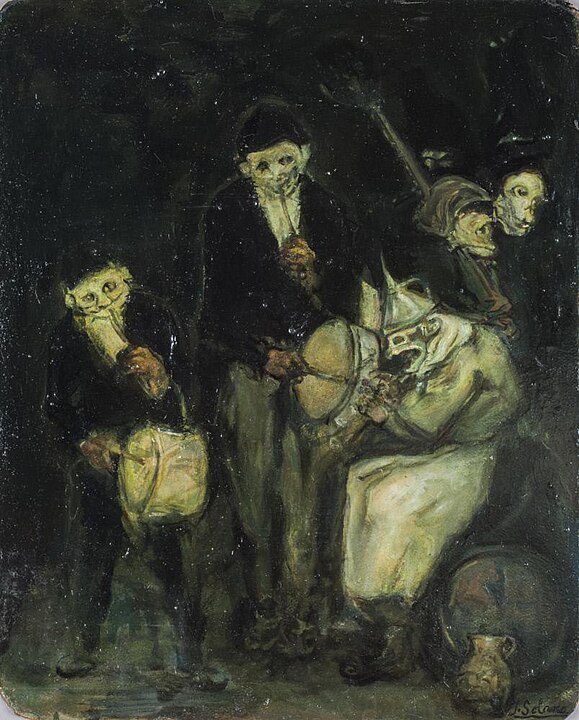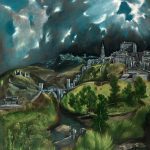
José Gutiérrez Solana (1886–1945), a Spanish painter and writer, left an indelible mark on the cultural landscape of Spain during a period of profound societal and artistic change. Born on February 6, 1886, in Santander, Spain, Gutiérrez Solana’s artistic journey unfolded against the backdrop of a nation grappling with political and cultural shifts.
Gutiérrez Solana’s early years were marked by an exploration of his artistic talents and a deep engagement with the cultural and social currents of his time. Coming of age during a period of intense political and social transformation in Spain, he developed a keen awareness of the complexities and contradictions within Spanish society.

The artist’s formal artistic training began at the Real Academia de Bellas Artes de San Fernando in Madrid, where he studied under the guidance of acclaimed Spanish painter Cecilio Pla. This period of education laid the foundation for Gutiérrez Solana’s artistic endeavors, providing him with the technical skills and knowledge necessary to navigate the diverse styles and movements prevalent in the art world.
Struggles & Triumphs
Gutiérrez Solana’s artistic style evolved in response to the changing socio-political landscape of Spain. Influenced by the tumultuous events of the early 20th century, including the Spanish Civil War, his work reflected a deep engagement with the human condition, capturing the struggles and triumphs of everyday life.
One of the defining features of Gutiérrez Solana’s oeuvre is his penchant for expressionism. His paintings often conveyed a raw intensity, depicting the harsh realities of poverty, social injustice, and the human experience. Works such as “The Quitandera” and “The Slaughterhouse” exemplify his ability to convey the emotional depth and starkness of his subjects.

In addition to his contributions to visual art, Gutiérrez Solana was a prolific writer, producing essays, novels, and plays. His writings delved into the same societal issues that fueled his paintings, providing a multi-faceted exploration of the human condition and the complexities of Spanish society.
Unvarnished Spanish Life
Gutiérrez Solana’s legacy extends beyond the canvas and the written word. His commitment to portraying the unvarnished truths of Spanish life, along with his bold use of color and form, left an enduring impact on the Spanish art scene. Through his work, he not only captured the zeitgeist of his era but also contributed to the broader narrative of Spanish art history.
Despite the challenges and controversies that marked his career, José Gutiérrez Solana remains a significant figure in Spanish art. His paintings and writings continue to be studied and celebrated for their unflinching portrayal of the human experience, making him a key protagonist in the cultural tapestry of Spain during the early to mid-20th century.

In conclusion, José Gutiérrez Solana’s biography is a testament to his role as a keen observer of Spanish society, capturing its complexities and contradictions through his expressive and thought-provoking art. His legacy endures as a poignant reminder of the power of art to reflect and comment on the human condition and the ever-changing dynamics of the world.




